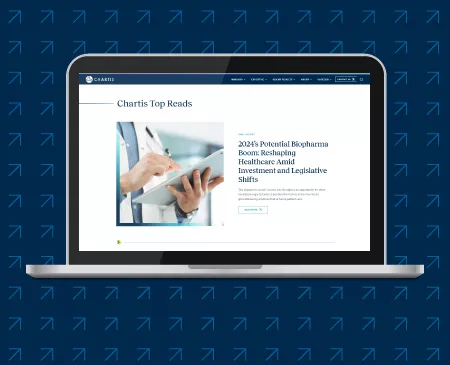What’s Trending: APMs, Payviders, and Digital Solutions Are Advancing Value-Based Oncology
In 2022, oncology emerged as an investor favorite because of a unique set of features making cancer care attractive for value-based transformation. While the progress last year was material, tailwinds for value-based oncology care are expected to continue gaining strength in 2023, supporting continued alternative payment model (APM) experimentation from payers, alignment of new payvider models, and maturation of digital enablement and home-based care.
Why It Matters:
As investors evaluate the value-based care oncology thesis, the opportunity is immense. Cancer incidence is growing precipitously, fueled by an aging U.S. population. Total cancer cases are expected to top 2.3 million by 2030, driving over $250 billion in healthcare expenses. The care ecosystem is rife with disutility, a function of buy-and-bill drug incentives (and broader fee-for-service hazards), multimodal episodes that often lack central coordination and care management, and avoidable admissions.
With this backdrop, the theory of value-based care is straightforward: a risk-on oncology practice should be able to meaningfully bend the cancer cost curve through evidence-based practice and a high-touch, value-oriented care model. Investor-backed platforms will continue to iterate and overcome traditional roadblocks—securing provider capacity, designing smarter models of risk, and enabling care transformation that unlocks lasting value for patients, providers, and payers.
What’s Next:
Despite macroeconomic conditions, oncology capital investment will increase in 2023. Now more than ever, the opportunity across APM experimentation, payvider alignment, and digital enablement will continue to drive strong investment theses and dynamic deployment of private capital, even if broader economic conditions and investor activity deteriorate.
In our latest report, we dig into our 3 predictions for where the industry is headed in 2023:
- Oncology APMs will continue their slow but inexorable advance. APM experimentation will continue in 2023 in the commercial space, along with a rollout of the new Enhancing Oncology Model (EOM). Adjacent to payer-led APMs, we also expect heightened activity in direct-to-employer contracting for cancer care with fixed price or payment bundling. For example, last year, Carrum Health bundled cancer episodes for employers through Memorial Sloan Kettering Cancer Center’s “MSK Direct.” That model was extended in August 2022 through City of Hope, bringing bundled cancer care to a large swath of Southern California. Other entrants are moving quickly to create similar employee care management and innovative payment models, such as Transcarent Oncology Care (a service introduced in April 2022).
- Payers and risk-bearing providers are circling the oncology opportunity. The key theme to watch for in 2023 is how many payers and risk-bearing primary care platforms make the leap into value-based medical oncology, whether owned or contracted. Several large oncology platforms are planning to transact in 2023, led by the recently announced special purpose acquisition company (SPAC) of American Oncology Network (AON). These platforms could provide an immediate accelerant to risk-bearing primary care practices seeking to own more of the patient continuum and/or attractive targets to payers seeking to become cancer providers. In addition, many of the large, publicly traded primary care platforms are expected to explore de novo and acqui-hire strategies to establish an oncology presence adjacent to their primary care footprints.
- New digital enablement and home-based care models are accelerating value. There will be rapid growth in both the Digital Care Director (DCD) business and growing application of cancer care at home, albeit on different ends of the provider spectrum. For instance, Thyme Care is expected to scale across new geographies and health plans; copycat navigation businesses will emerge; and by virtue of its position in the cancer continuum, DCDs will become major influencers in the referring value chain. For home-based cancer care, academic centers will experiment initially in outpatient stem cell transplant, given the duration of treatment and the extensive monitoring needs of immune-compromised, post-transplant patients. If successful, application of home-based supportive care and select in-home chemo infusion may expand. At the other end of the spectrum, home-based care will likely deploy rapidly in the independent practice setting as an enablement for oncology medical homes. Providers remain lukewarm on the idea of home-based chemo, but companies like Reimagine Care will find a willing buyer for tools that facilitate 24/7 remote care, specifically in practices that take downside risk on Part A spend.
Moving forward, it will be important for healthcare organizations seeking to deliver the highest quality cancer care to secure provider capacity, design smarter models of risk, and enable care transformation with a commitment to value-based care and patient experience. These areas of focus will continue to define the most innovative cancer care delivery models in 2023 and beyond.



